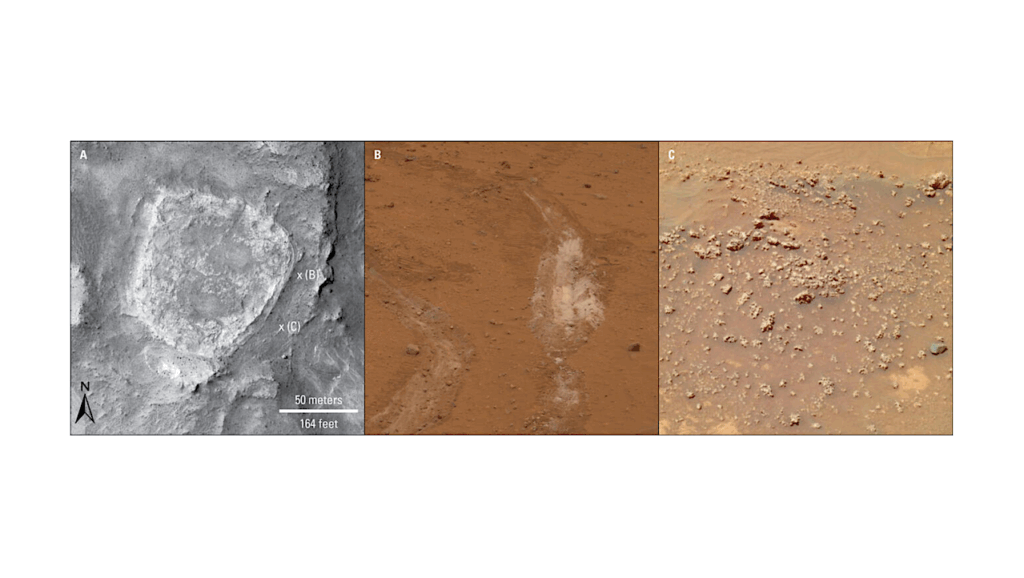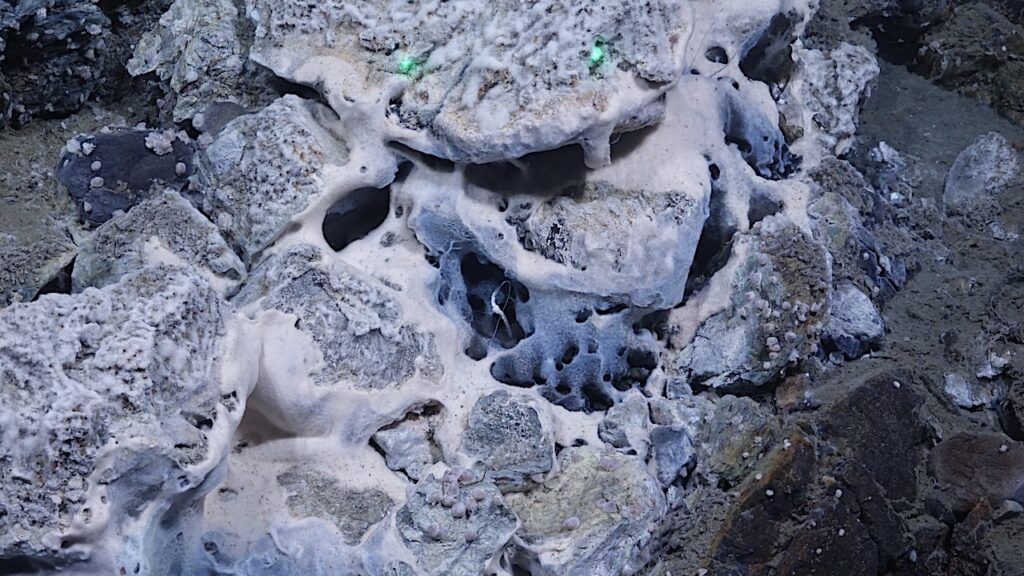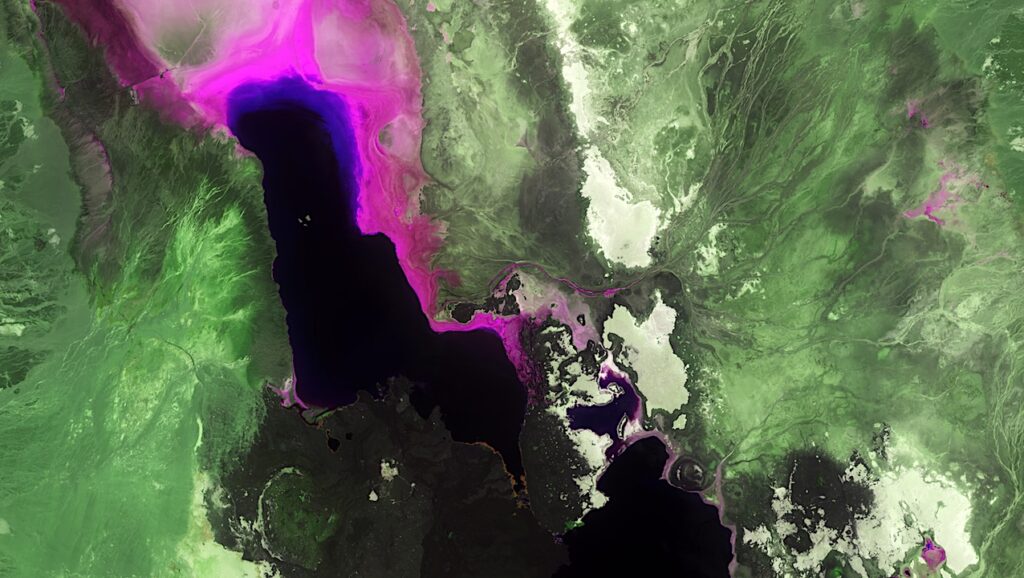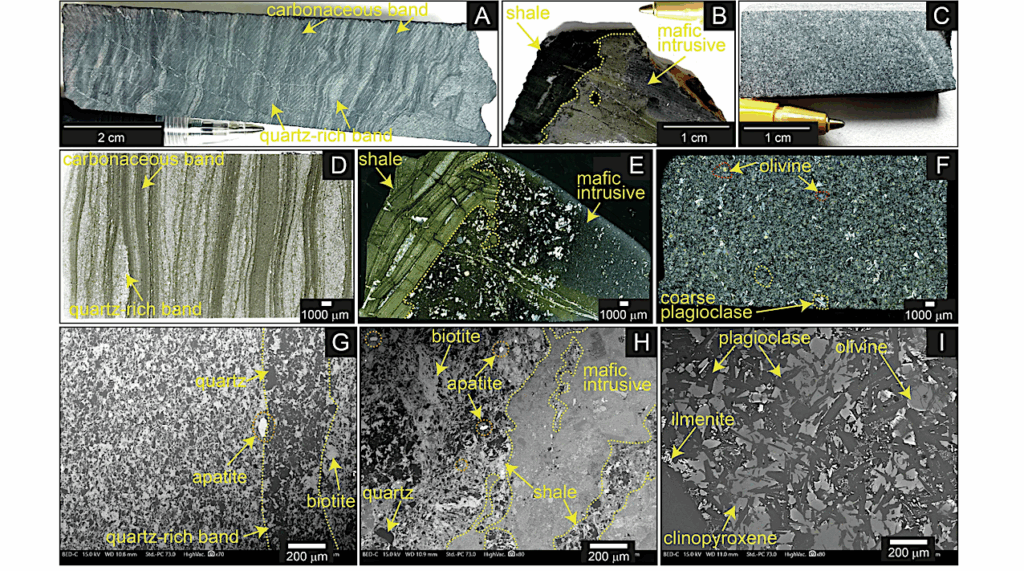Using Antarctica To Prepare For A Mission To Europa
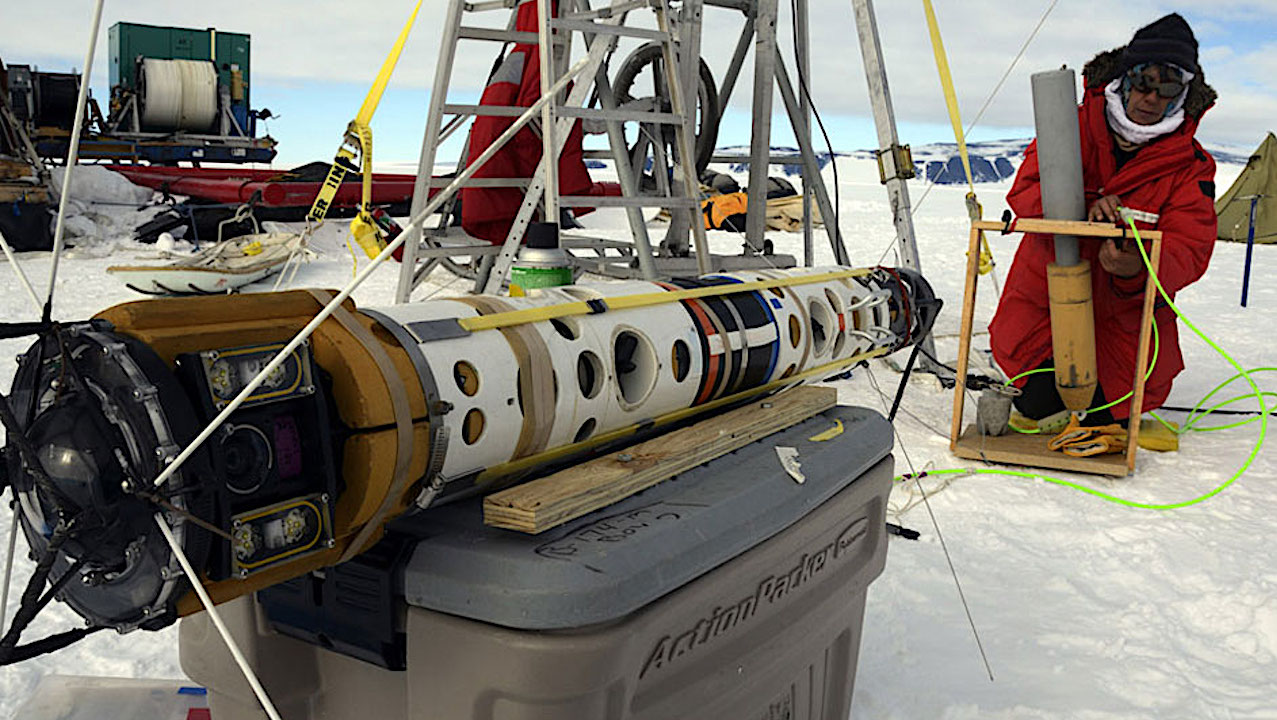
Four bleary-eyed men wearing grease-smeared tan jackets or red parkas emerge from what first appears to be a leftover prop from a Mad Max film. Nine silver smokestacks tower above nine fire-engine-red hot water tanks, all bolted down to a large sled.
The roving drill, as it’s known, is a bit like a giant high-pressure car wash on skis. All of its force is focused through a nozzle attached to a thousand meters of hose. It is designed to bore through thick ice when expediency is a top priority.
Still, the effort to melt glacial ice takes time. Lead driller Dennis Duling and his team from the University of Nebraska-Lincoln stayed up until 1 a.m. that day to punch a hole slightly smaller than the width of a manhole cover through the McMurdo Ice Shelf, not far from White Island.
“We’re interested in this place as an analog for Europa,” says Britney Schmidt, an assistant professor in the Georgia Institute of Technology’s School of Earth and Atmospheric Sciences. She is the principal investigator on a NASA-funded astrobiology project called Sub-Ice Marine and PLanetary-analog Ecosytems (SIMPLE) that is being supported by the National Science Foundation through the U.S. Antarctic Program.
It’s not the scenery on the surface of the ice that Schmidt is talking about, though it is spectacular on this nearly windless November day in the Antarctic. A plume of smoke from Erebus volcano seems to puddle in a cloud above the crater, attesting to the stillness. Pressure ridges taller than a person, where the ice has buckled skyward, are visible in the distance near White Island’s shoreline.
All eyes focus instead on the borehole, which drops down about 40 meters through snow and ice into the ocean below. The interface between water and ice on the underside of the ice shelf is where Antarctica and Europa, a moon of Jupiter, intersect in terms of how conditions here may help future exploration of Jupiter’s icy moon nearly 400 million miles away.
Specifically, Schmidt’s team wants to learn all it can about every possible process chemical, physical and even biological that occurs between the interaction of ice and water in the ocean cavity. That data will provide clues that a spacecraft could use when it probes Europa’s surface during a mission to the distant moon.
Antarctica and Jupiter moon are the same but different
One of more than 60 moons that orbit Jupiter, Europa is a leading candidate in the solar system for harboring extraterrestrial life. Information from satellites has suggested that a salty ocean exists under the moon’s ice shell, which is tens of kilometers thick. As the saying goes, where there is water, there is life.
Schmidt was a co-author on a paper last year in the journal Nature Geosciences that found the subsurface ocean might have deep currents and circulation patterns that transfer heat and energy capable of sustaining life though think microorganisms like bacteria and not almond-shaped-face aliens with flying saucers.
Prominent features on the surface of Europa called chaos terrains are regions of disrupted ice that may be the result of convection in the moon’s ice shell that is accelerated by heat from the ocean. Plumes of buoyant ice are possibly rising through the ice cover, responsible for creating chaos terrains and other features.
A somewhat similar process occurs on some marine-based ice shelves in Antarctica.
“We think there is some ice accretion going on there,” said Schmidt, referring to the McMurdo Ice Shelf. Seafloor sponges have been found on the surface of the ice shelf, suggesting that anchor ice from the bottom of the ocean is detaching, carrying with it hitchhiking marine organisms that become glued to the bottom of the ice shelf.
Ice ablates at the surface, as the ice shelf continues to build itself from below. The incongruous sponge at the surface may have arrived at its unlikely destination through such a process.
“That process of ‘freezing on’ is very relevant to these other ice shelves,” Schmidt explained. “We’re trying to figure out what kind of signal you might see in the upper ice [to explain] what’s going on down in the ocean how these two interact.”
New AUV represents leap forward in under-ice exploration
Georgia Tech has developed a $400,000 autonomous underwater vehicle called Icefin to investigate the water environment below the McMurdo Ice Shelf. Sleek like a black torpedo, the three-meter-long robot carries a host of sensors and instruments aboard its frame including cameras, sonars, a current profiler and a CTD (conductivity, temperature and depth) profiler, among other devices.
“It’s a lot of science on one vehicle. It’s the smallest vehicle that does all that stuff, at least with high-powered versions of all that instrumentation,” Schmidt said.
The job of squeezing all of those tools into one self-propelled toolbox fell to Michael “Mick” West, a senior research engineer at Georgia Tech Research Institute.
Development of Icefin began as a classroom project, according to West. “Some of the ideas that we ultimately came up came from students,” he noted.
West has been developing AUVs for the better part of 15 years. However, for most of those projects, size was never a factor because the robots are usually deployed off ships in the open ocean, not through a hole in the ice.
“There are all sorts of design challenges with going underneath the ice,” West said.
Navigation is one problem. GPS doesn’t work under the water, let alone below many meters of ice cover. How to enable Icefin to navigate under the ice on its programming? The problem is called simultaneous localization and mapping, or SLAM, for mapping an unknown environment while keeping track of its location at the same time.
In this case, West’s team is using the ice to its advantage by programming Icefin to create a map of the topography under the ice shelf using its camera and sonar as it flies through the water.
“You’re basically building your own constellation of GPS and mapping those features inside your map,” West explained. “You can then map to those features.”
Last hurrah for NSF-funded SCINI robot under the ice
Icefin is expected to make its debut sometime this field season, making the plunge down through at least one of six planned sites on the McMurdo Ice Shelf.
However, at what the team has dubbed Delta site, where Duling and company spent the better part of 36 hours melting snow and ice, the plan is to send SCINI down the borehole.
SCINI, for Submersible Capable of under-Ice Navigation and Imaging, is the little ROV (remotely operated vehicle) that could. About half the length of Icefin, SCINI was originally developed under a grant from the National Science Foundation to Stacy Kim, a benthic ecologist at Moss Landing Marine Laboratories.
SCINI is sort of the scout of the ROV world. It is relatively lightweight, with minimal gear, unlike Icefin. It was designed to dive down as deep as 300 meters to the seafloor under sea ice where divers can’t go. Kim wanted to see what marine critters lived in the deep of McMurdo Sound.
SCINI did that and more over the last seven years. In 2010, while skimming along the bottom of the Ross Ice Shelf during an unrelated project, the ROV spied a new species of sea anemone living on the underside of the ice.
And on what appears to be one of its last missions before being retired at the end of the 2014-15 season “It’s done its job. For a little ROV, seven years is a long run,” Kim noted ROV pilot and technician Laughlin Barker spied a small squid along the underside of the ice shelf.
Exclamations of surprise and excitement filled the small command center, consisting of a couple of laptops and a flat-screen monitor on a fold-out table, with black plastic wrapped overhead to shield out the 24-hour daylight coming through the large expedition tent.
Almost as amazing as finding life so far underneath an ice shelf was the topography of the ice itself. SCINI’s camera showed a matrix of ice crystals that might have been mistaken for some rugged alien terrain.
“It’s like flying through mountains,” Barker said.
Added Schmidt, “The topography is totally amazing.”
Going where no one has gone before
In part, Icefin’s basic design was based on the SCINI model. Kim said it’s gratifying that the work her teams have done over the years had advanced research and instrumentation.
“It’s exciting, because there’s a proliferation [of these robots]. I’m happy to see this kind of thing is growing,” she said. “Most of the vehicles have been survey-type vehicles. Hopefully, someone will take the next step and build out something that is more manipulator/experiment friendly.”
Enter Artemis.
Artemis is another autonomous underwater vehicle under development by the SIMPLE project. It is being built by Stone Aerospace, a company that also designed ENDURANCE, a robot used to explore the ice-covered lakes of the McMurdo Dry Valleys several years ago.
Named after the Greek goddess of hunting, Artemis will be armed with a vast suite of scientific instruments to characterize the water, ice and any microbiology found within and below the ice.
The list of equipment is impressive: a CTD, acoustic Doppler current profiler, mapping and profiling sonars, imaging, HD video, a science tower with various sensors for water chemistry, as well as a water sampler and a protein fluorescence spectrometer to test for microbiological communities within and on the ice.
It will be capable of diving a kilometer deep. More importantly, it will be able to range as far as 15 kilometers, allowing scientists to release it from the ice edge directly into the ocean beginning in 2015-16.
This year, the Georgia Tech team is also collaborating with scientists and engineers from the University of Texas’ Institute for Geophysics. The UT group is scheduled to fly over the ice shelf with a special aircraft-mounted radar system that will attempt to characterize the same water-ice boundary layer as the robots in the sea.
Schmidt said it is important that the datasets between the AUVs and the airborne instrument match up well, with the robots below the ice shelf providing ground-truth for the system aboard the Twin Otter aircraft.
“That is really relevant to exploring Europa because that radar instrument is going on the next mission to Europa,” she explained.
The mission, Europa Clipper, appears to be the leading candidate for NASA’s first major expedition to Jupiter’s sixth moon. The $2.5 billion reconnaissance mission would place a spacecraft in orbit around Jupiter. It would potentially carry radar instruments like the one being tested in Antarctica to study the moon’s ice shell.
“Our goal is to do enough science with those instruments [on Europa Clipper] that we can then send a spacecraft that could potentially land and drill [into the ice shell] or land and melt in a probe,” Schmidt said. “We can land and do this in my lifetime.”
Astrobiology


